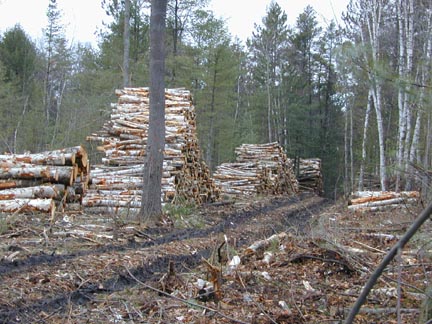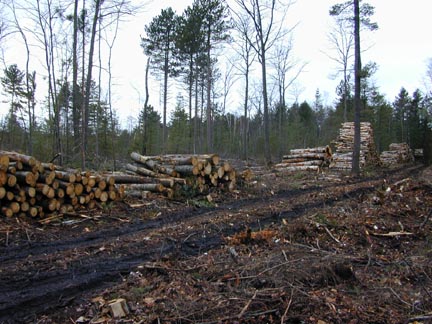PULPWOOD
The cutting of spruce and fir by the pulpwood industry started
before 1900 and increased in areas cut and volumes consumed to a high level reached in the
1940's. The supply of mature spruce has diminished sharply since then, and yet spruce is
still a very important item commanding a high price at every point. The cutover spruce
swamps, and others which yielded tremendous volumes of cedar posts, poles, and shingle
bolts, have been reproduced as before, but are now generally less than half-grown as they
require for 80 to 120 years to mature.

Source:
Photograph by Randy Schaetzl, Professor of Geography - Michigan State University
Bigger than sawlogs and veneer is the pulpwood industry. More
aspen, much more jack pine, and more dense hardwoods are being cut for pulpwood since
about 1950, and less spruce and balsam fir. Spruce is the most valuable, but mature spruce
is getting to be a very scarce item. The supply of most other species is good and with any
degree of management will allow a greatly increased total harvest.

Source: Photograph by Randy Schaetzl, Professor of Geography - Michigan State University
This material has been compiled for educational use only, and may not be reproduced without permission. One copy may be printed for personal use. Please contact Randall Schaetzl (soils@msu.edu) for more information or permissions.